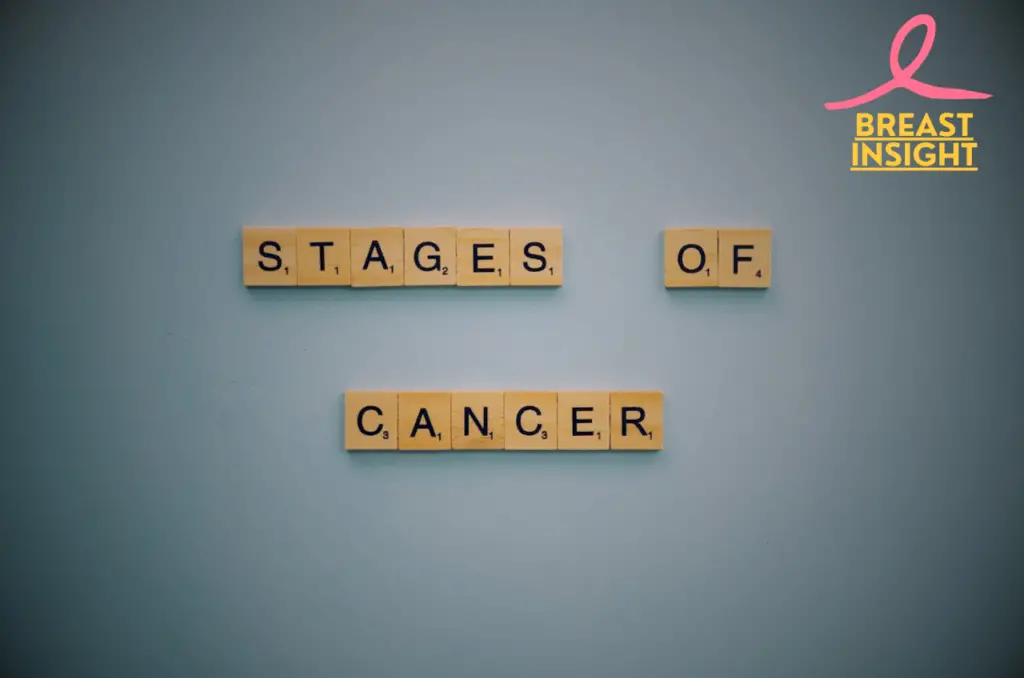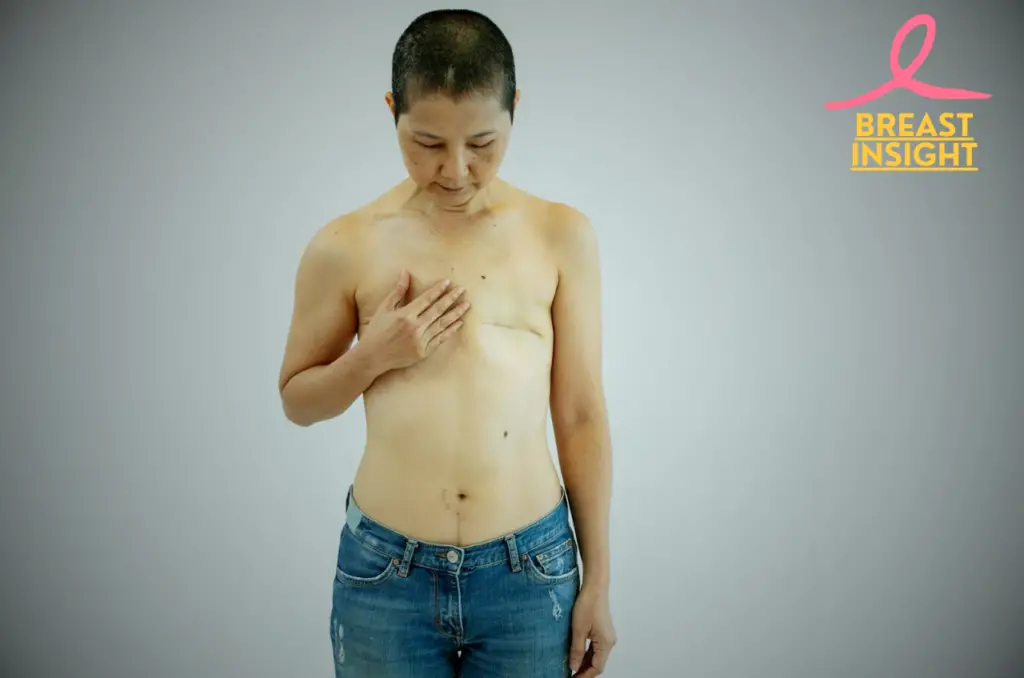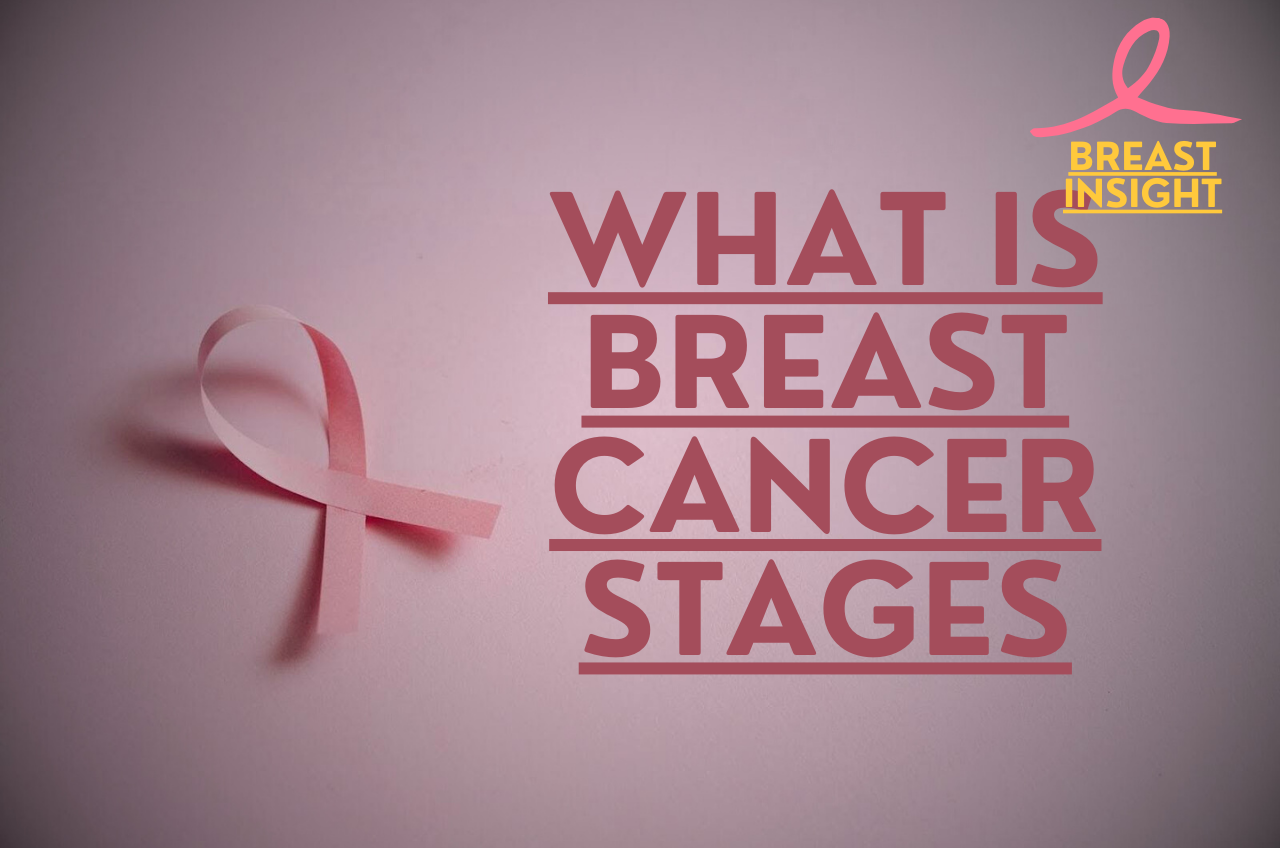Do you think that doctors rate the aggressiveness of breast cancer? The heart of the knowledge would be its staging. Right from the minute a lady is diagnosed; it is an important piece of information to guide treatment options and useful information on the outlook of a patient.
Breast cancer staging is not just medical technicality; it serves as a vital roadmap for survival. Whether you are a patient, a caregiver, or someone simply concerned about health, understanding these stages can equip you with essential knowledge. Ranging from the earliest and most treatable Stage 0 to the more formidable Stage IV, each phase narrates a distinct story of the cancer’s progression and the body’s determined struggle against it.
In this detailed walkthrough, we’ll overview the four stages of breast cancer-from non-invasive to metastatic. We’ll find out how each stage is determined, what that means for the options in terms of treatment, and the factors affecting staging. By the end, you will have a clearer sense of this complex topic and be better equipped to discuss breast cancer diagnosis and treatment. So let’s start this enlightening journey through the stages of breast cancer.

Understanding Breast Cancer Stages
Importance of staging in treatment planning
Staging breast cancer is essential for planning the most effective treatment and prognosis. Thus, staging aids the oncologist in assessing the extent of the disease and choosing the best treatments. This enables clear-cut actions regarding surgery, radiation, chemotherapy, and targeted therapy.
TNM classification system explained
The TNM system remains the most widely used staging system for breast cancer:
- T (Tumor): stands for the size and the extent of the primary tumor.
- N (Nodes): whether the cancer has spread to the nearest lymph nodes.
- M (Metastasis): Shows if the cancer has spread to distant parts of the body.
| Component | Description | Examples |
| T | Tumor size | T1 (≤2 cm), T2 (2-5 cm), T3 (>5 cm) |
| N | Lymph node involvement | N0 (no spread), N1 (1-3 nodes), N2 (4-9 nodes) |
| M | Distant metastasis | M0 (no metastasis), M1 (metastasis present) |
Stage group overview
Stage grouping integrates the T, N, and M information to determine an overall stage:
- Stage 0: Non-invasive cancer (carcinoma in situ)
- Stage I: Early-stage invasive cancer
- Stage II: Locally Advanced Cancer
- Stage III: Regional spread
- Stage IV: Metastatic cancer
A notable case is that of actress Shannen Doherty, diagnosed in 2020 with Stage IV metastatic breast cancer. Her experience so vividly portrays the importance of staging. Initially diagnosed with early-stage breast cancer in 2015, treatment failed to prevent the spread to distant organs. Such a case shows how staging directs the choice of appropriate therapies and how this choice affects future results.
Grasping these stages enables both patients and healthcare providers to make enlightened choices regarding treatment alternatives and follow-up care. As we explore each stage, you will develop a more profound comprehension of breast cancer progression and its ramifications for patient care.

Stage 0: Non-invasive Breast Cancer
Stage 0 breast cancer is simply called non-invasive breast cancer or sometimes ‘carcinoma in situ’. It is the earliest form the disease can be found. In stage 0, the abnormal cells have not yet broken out to enter the surrounding tissues and other parts of the body.
Ductal carcinoma in situ (DCIS)
DCIS is the most common type of non-invasive breast cancer. It develops when abnormal cells multiply inside milk ducts but are confined within ductal walls. Even though DCIS is not life-threatening, if untreated, it may increase the risk of advancement to invasive breast cancer. Learn more about hidden symptoms of breast cancer here to stay informed and recognize early signs.
LCIS Lobular carcinoma in situ
LCIS is less common than DCIS and is characterized by misshapen cell growth in the milk-producing glands of the breast, called lobules. Although LCIS itself isn’t considered cancerous, it does carry a risk of developing into invasive breast cancer sometime in the future.
Treatment options for stage 0.
Treatment for stage 0 breast cancer aims to prevent the progression to invasive cancer. Options include:
- Surgery
- Lumpectomy (breast-conserving surgery)
- Mastectomy (removal of the entire breast)
- Radiotherapy
- Hormone therapy, for hormone receptor-positive DCIS
| Treatment | DCIS | LCIS |
| Surgery | Yes | Sometimes |
| Radiation | Often | Rarely |
| Hormone therapy | Sometimes | Sometimes |
Detection and treatment of stage 0 breast cancer very early in the course markedly improve the chance of avoiding invasive breast cancer with very good long-term prognosis.

Stage I: Early Invasive Breast Cancer
Let us now venture into Stage I, where the offense of invasive breast cancer begins. In this, the invasive breast cancer is marked to have small tumors which begin to invade the surrounding breast tissues. Understanding what cancer is and how it develops can be valuable at this stage; learn more about cancer causes, symptoms, and treatments here for a deeper insight.
Stage IA Characteristics
Stage IA breast cancer is characterized by the following criteria:
- Tumour diameter ≤ 2 cm
- Lymph node status: No lymph node involvement
- Metastasis: Not spread to distant part of the body.
Stage IB Features
Stage IB There is slight deviations
- Tumor size: No tumor found in the breast, or tumour with greatest dimension is 2 cm or smaller.
- Lymph node status: Small cell clusters of cancer (0.2-2 mm within lymph nodes)
- Metastasis: No distant spread in the body
This is the comparison of stage IA and IB:
| Characteristic | Stage IA | Stage IB |
| Tumor Size | ≤ 2 cm | ≤ 2 cm or not found |
| Lymph Nodes | Not involved | Small clusters (0.2-2 mm) |
| Metastasis | None | None |
Prognosis and Survival Rates
Early-stage breast cancer usually has an excellent prognosis. The survival rate after 5 years for women diagnosed with Stage I breast cancer is almost 100%. Still, based on various factors, such as
- Tumor grade
- Hormone receptor status
- HER2 status
- General well-being of the patient
- Response to treatment
Treatment typically involves surgery followed by radiation. Some patients may also receive chemotherapy or hormone therapy based on their individual needs. We now turn to Stage II breast cancer, a stage in which the disease is advanced but still localized.

Stage II: Locally Advanced Breast Cancer
Stage II would thus imply a step in the disease progression where the cancer had started to invade beyond its previous confines but was confined. This stage is further divided into two subcategories: Stage IIA and Stage IIB, each with distinct features. Understanding the causes of breast cancer can shed light on preventive measures and early interventions, which are crucial at this stage.
Stage IIA Features
- Tumor size: 2-5 cm
- Lymph nodes involved: 0-3 lymph nodes
- No distant metastasis
Stage IIB Characteristics
- Tumor size: >5 cm
- Lymph node positive number: 0-3
- No distant metastasis
| Feature | Stage IIA | Stage IIB |
| Tumor Size | 2-5 cm | >5 cm |
| Lymph Node Involvement | 0-3 nodes | 0-3 nodes |
| Distant Metastasis | None | None |
Therapeutic Approaches for Stage II
The treatment for stage II breast cancer usually involves a combination of the following:
- Surgery: Lumpectomy or mastectomy
- Radiation therapy
- Chemotherapy
- Hormonal therapy (if hormone receptor-positive)
- Targeted therapy (if HER2-positive)
Treatment plans are also focused based on tumor size, involved lymph nodes, and the status of hormone receptors. The treatment would generally have a favorable prognosis if breast cancer is at stage II, given appropriate treatment. That is why early detection and timely intervention are crucial. As we progress, we will be discussing Stage III breast cancer, a disease manifested by broader regional extension of the disease.

Stage III: Regional Spread
Stage III breast cancer-the term used for the lesion is locally advanced breast cancer-factually represents a more significant progression of the disease. Here, the cancer has invaded closer tissues, including those of lymph nodes, yet remains localized from achieving distant sites within the body.
Stage IIIA Description
Stage IIIA breast cancer includes one of the following:
- Tumor is absent in the breast or any size tumor, with cancer in 4-9 axillary lymph nodes.
- A tumor greater than 5cm, with small clusters of cancer cells embedded in the lymph nodes.
- Tumor size is greater than 5 cm with involvement of 1-3 axillary lymph nodes
Stage IIIB Description
In stage IIIB:
- It has expanded into the chest wall or skin.
- It may lead to a swelling or ulceration of the breast.
- Could have metastasized to up to 9 axillary nodes
Stage IIIC Description
Stage IIIC represents the most advanced manifestation of stage III breast cancer is qualified by:
- Involvement of 10 or more axillary lymph nodes
- Lymph nodes can be found above or below the collarbone
- Internal mammary nodes are also affected
Issues and Treatment Interventions
| Challenges | Treatment Strategies |
| Larger tumor size | Neoadjuvant chemotherapy |
| Lymph node involvement | Surgery (mastectomy or lumpectomy) |
| Potential spread to nearby tissues | Radiation therapy |
| Higher risk of recurrence | Targeted therapy |
Treatment for Stage III breast cancer commonly combines both therapies:
- Neoadjuvant chemotherapy to shrink the tumor.
- Excision with tumor and involved lymph nodes
- Radiation treatment to clear residual cancer cells.
- Targeted therapies based on the cancer’s specific characteristics
Advances in therapy have greatly enabled improvements in stage III breast cancer over the last few years. We now discuss stage IV, also known as metastatic breast cancer.

Stage IV: Metastatic Breast Cancer
A. Definition and Characteristics
Stage IV breast cancer, also known as metastatic breast cancer, is essentially the final stage of the disease. At this point, cancerous cells will have spread from the breast and the nearby lymph nodes and have advanced to other distant areas in the body. The following are what categorize this stage:
- Distant metastases
- Continuously growing and proliferating.
- Irreversible but curable illness
Learn more about the latest breast cancer treatment options that are designed to provide relief and manage symptoms effectively.
B. Most common metastatic sites
It is very common for breast cancers to spread to some organs and tissues. Common sites of metastasis are:
| Organ/Tissue | Frequency |
| Bones | 70% |
| Liver | 60% |
| Lungs | 60% |
| Brain | 10-30% |
C. Treatment objectives and choices
The principal objectives of the treatment of metastatic breast cancer are:
- Prolonging survival
- Managing symptoms
- Improving quality of life
Treatment options may include:
- Systemic therapies (chemotherapy, hormone therapy, targeted therapy)
- Radiation therapy
- Surgery (in select cases)
- Palliative care
D. Quality of life considerations
Living with metastatic breast cancer demands a commitment to the highest quality of life possible. Key considerations include:
- Pain control
- Provides emotional support and mental healthcare.
- Nutrition and exercise.
- Supplementary therapies.
- Advanced care planning.
Despite these difficulties, many people diagnosed with metastatic breast cancer can live quite nice lives for extended periods due to good care and support. The treatment plan is designed according to the patient’s global health, cancerous disease characteristics, and preferences.

Factors Affecting Staging
Breast cancer staging is a complex process that takes into account several important parameters. The fact-finding part of these factors makes sense to evolve an appropriate therapy plan and predict the outcome in patients.
A. Tumor size and site
The size and location of the tumor are very important in staging breast cancer. Generally speaking, more advanced stages are associated with larger as well as those that have extended beyond the limits of the breast tissue.
B. Lymph node involvement
Staging significantly depends on the presence of cancer in the nearby lymph nodes. The higher the involvement of the lymph nodes, the higher the staging of breast cancer.
C. Hormone Receptor Status
The presence or absence of hormone receptors, namely estrogen and progesterone, then dictates the stage of cancer as well as treatment options. Positive cancers are also thus associated with a better prognosis; they tend to respond to hormone therapy.
D. HER2 status
HER2 stands for human epidermal growth factor receptor 2; it is a protein that promotes the proliferation of cancerous cells. HER2-positive breast cancers tend to be more aggressive, but targeted therapies can control them.
E. Hereditary Factors
Genetic mutations like BRCA 1 and BRCA 2 dramatically influence staging treatment in breast cancer.
| Factor | Impact on Staging | Treatment Implications |
| Tumor size | Larger size = Higher stage | May require more aggressive treatment |
| Lymph node involvement | More involvement = Higher stage | May need broader treatment approach |
| Hormone receptor status | Positive status = Better prognosis | Eligible for hormone therapy |
These individually form the basis of the TNM staging system that will help oncologists to determine the best course of treatment. Now as we go on it is very important to remember that each patient’s experience with breast cancer is different, so therefore treatment plans tailor to fit individual circumstances.

Conclusion
Staging of breast carcinoma is critical in any patient’s life cycle of diagnosis and treatment planning. The cancer stages, ranging from the non-invasive Stage 0 to the extensive metastatic Stage IV, represent individual thresholds of cancer advancement, thus requiring specific care. Knowledge of these stages will enable patients and their families to make decisions regarding the choices in treatment options and the potential prognosis.
Early diagnosis continues to be a key principle in fighting breast cancer. Proper diagnostic screening, self-examination, and awareness of risk factors increase the chances of earlier detection and lead to better outcomes. Remember how staging is sometimes important but treatment decisions and prognosis depend on so many factors always go and discuss with your healthcare provider to have a proper treatment plan that regards your needs and circumstances.
Frequently Asked Questions (FAQs)
What are the typical symptoms of breast cancer?
Common symptoms of breast cancer are changed size or outline of the breast, a new lump or thickness within or near the breast, swelling, reddening, or pitting of the skin over the breast, a change in the way the nipple looks or feels, such as swelling, redness, or a scaly texture; or discharges from either of the nipples. Notably, most cases do not have noticeable symptoms at all.
How often should I go for a breast cancer screening?
All have different screening recommendations based on age and risk factors. Generally, women ages 40 to 44 should be offered the initiation of annual mammograms while those ages 45 through 54 should be given annual screenings. Women aged 55 or older can continue on biennial screening or can be offered continued annual mammograms. Those with very high risk factors may require initiation of screening earlier, or more frequently.
Can a male develop breast cancer?
In fact, a man can have breast cancer, though it still tends to be much less common in men than women. The disease usually occurs in older age groups, with symptoms that could appear as lumps or swelling in the breast tissue. For men, awareness and early detection are just as crucial because getting appropriate treatment sooner can significantly improve results.
What lifestyle modifications might decrease the risk of breast cancer?
Although not all cases of breast cancer can be prevented, there are some lifestyle modifications that can reduce the risk. These include maintaining a healthy weight, becoming physically active, following a healthy diet high in fruits and vegetables, reducing alcohol intake, and avoiding tobacco use. Furthermore, screenings and staying informed about breast health are important factors in managing risk.


1 thought on “4 Key Stages Of Breast Cancer: A Complete Insight for Patients”